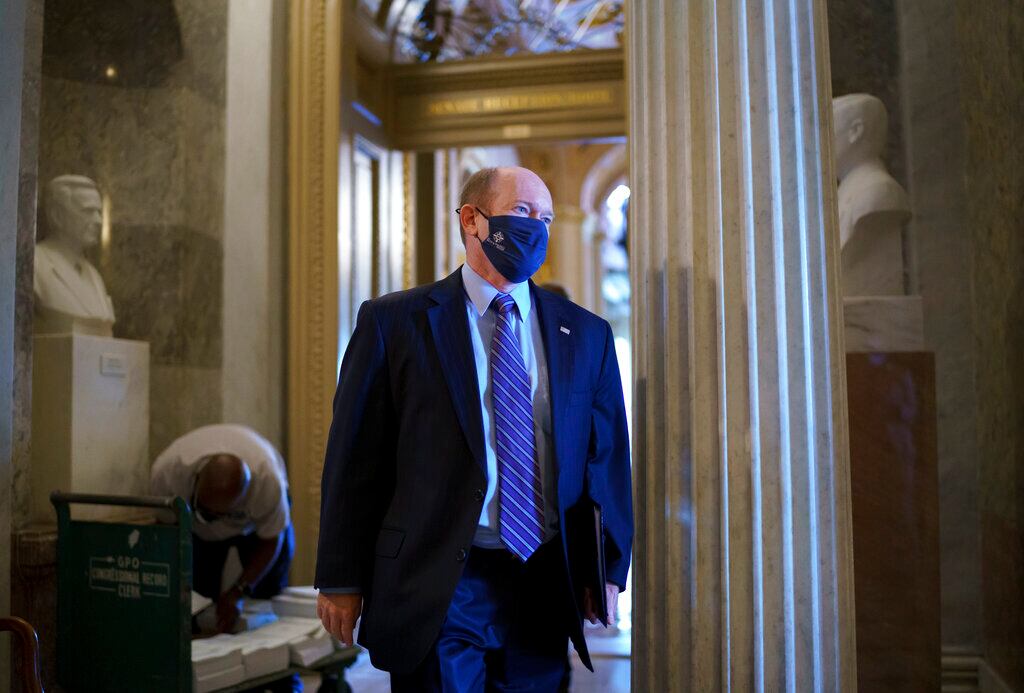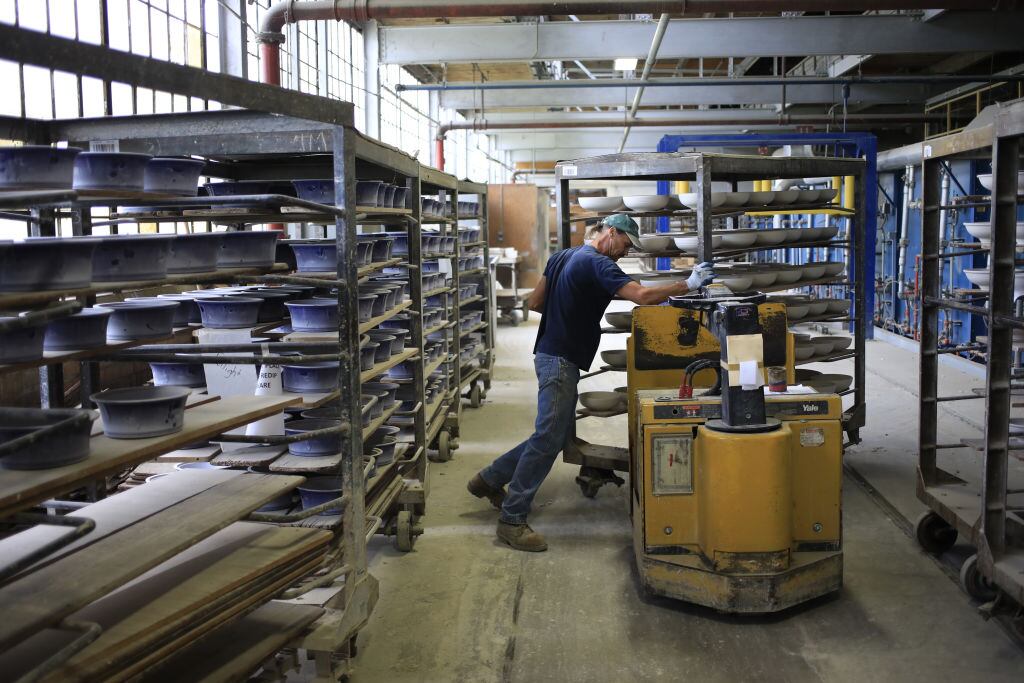As Congress negotiates a blockbuster $3.5 trillion budget package, a group of moderate Democratic senators has quietly put forth a bill that could reshape domestic manufacturing in the United States.
Introduced by Sen. Chris Coons (D-Del.), along with others including Sens. Mark Warner (D-Va.) and Amy Klobuchar (D-Minn.), the Industrial Finance Corporation Act would create a government-owned commercial bank that would invest in manufacturers as they try to expand production here on American shores.
The Industrial Finance Corporation (IFC) would seek to address a well-known challenge in the U.S.-based manufacturing sector called the "valley of death." This is when capital dries up for companies trying to make the leap from the research and development phase to large-scale commercialization.
In recent decades, private capital has gravitated toward industries that don't require a sizeable upfront investment, leaving heavier industries to global competitors.

"The problem with the private sector is that it's very short term," said Yakov Feygin, associate director of the Future of Capitalism program at the Berggruen Institute. "For a variety of reasons, venture capital in particular is very scared of asset-heavy companies, precisely because of that uncertainty and the need to quickly recover returns for a portfolio."
Feygin, who assisted in shaping the legislation, noted that it can often take 10 to 15 years to recoup an investment on a manufacturing facility. For yield-hungry investors, that's a tough sell, especially with so many rapidly-growing tech startups offering investors easy returns.
The IFC aims to break out of this pattern of "short-termism" by giving the federal government a more active role in prioritizing which companies and industries should expand to meet the country's broader social and economic goals.
What are those goals? The bill includes language that touches on a number of hot-button issues, including supply chain resilience, job creation, and on-shoring advanced technology. It also breaks down possible investment opportunities in advanced batteries, semiconductor production, high-voltage transmission lines, and less carbon-intensive steel production.
On the semiconductor front, for instance, the bill proposes that the bank will enter into purchase agreements with U.S.-based production facilities to help guarantee the supply of "economically-critical chips," rather than relying on foreign producers.
This proposal comes as COVID-related shutdowns have caused several critical supply chains, from medical masks to chips, to seize up just when the economy needed them.
For the Democrats backing the bill, international competitiveness is also a selling point.
"Our international competitors—particularly China—have invested heavily in capturing the commercialization of the next generation of critical technology," said Coons in a statement. "This bill responds by deploying strategic investments that amplify our own economy’s strengths and serve American workers.”
This tracks with statements from progressive Democrats such as Massachusetts Sen. Elizabeth Warren, who called for a new "economic patriotism" during her presidential campaign. There are also a growing number of Republicans, including Florida Sen. Marco Rubio, who has stressed the importance of government support for manufacturing.
"The market will always reach the most efficient economic outcome, but sometimes the most efficient outcome is at odds with the common good and the national interest," he said in a 2019 speech.
This kind of language from both sides of the aisle marks a major shift in how lawmakers think about industrial policy, a catch-all label for a set of policies that could include anything from tariffs and quotas to state-led investment.
But as proponents of this idea have long argued, industrial policy is nothing new in America. It has a history stretching back to Alexander Hamilton, who is credited as its first major champion in the U.S. It's just been a long time since it's gotten this kind of support.

Historical Precedents
Indeed, the last time the U.S. fully embraced industrial policy was during the Great Depression.
In 1932, President Herbert Hoover created the Reconstruction Finance Corporation (RFC) with the goal of aiding key industries such as railroads and financial institutions. The program was fairly limited during Hoover's tenure, but the Roosevelt administration later doubled down on it, turning the RFC into a lynchpin of the New Deal and the World War II mobilization effort.
Congress ultimately disbanded the program in 1953, as the country weaned itself off of the heavy-handed economic management of the war years, but pieces of the RFC are still around to this day.
"There's little bits of it that still remain, like the Small Business Administration and the Export-Import Bank," said Todd Tucker, a fellow at the Roosevelt Institute, a think tank that has pushed for a greater federal role in the economy. "Those all used to be a part of that apparatus, but we don't have the papa-bank anymore. This would essentially reestablish that."
Tucker explained that other countries have since used U.S. industrial policy from that era as a model for their own post-war development. Japan and Germany, both of which would soon become fierce competitors in the global economy, were just two notable examples.
In fact, competition from those countries in the 1980s revived the argument for greater federal involvement in manufacturing, though the Reagan administration didn't heed these calls.
As for the latest revival of industrial policy, policy experts point to multiple sources.
Among them is the fact that in 2016 the European Union mandated member countries to create national development banks to support industry on the continent.
In addition, China a year earlier launched Made in China 2025, a concerted effort by the government to shift the country's economy from low-tech exports to advanced manufacturing.
"Once our big economic competitors went down the road, it forced a change in the conversation," Tucker said.
The COVID-19 pandemic has also played a role, as shipping bottlenecks and shutdowns have cut the supply of crucial inputs such as semiconductors, which has since led to widespread production cuts in the auto industry.
The Biden administration spearheaded a one-time investment in expanding domestic semiconductor manufacturing, but it has not yet set up anything along the lines of the RFC that would offer sustained support for a given industry.
Proponents of a national manufacturing bank say that one of its main jobs could be to anticipate the kinds of supply chain bottlenecks that afflicted the economy during the pandemic.
"One of the major roles I hope for the IFC to play is to produce high-quality research on where likely bottlenecks over the next 5, 10, 15, 20 years will be, given certain trends in development and given expectations about what will be necessary to confront known challenges," said Alex Williams, a research analyst at Employ America, another think tank that helped with the legislation.
He noted that much depends, however, on the size of the allocation given to the bank ($50 billion in the latest version of the bill) and the ambition of the people who staff the agency.
If the bank reverts to funding job training programs or university research programs, he added, rather than sizable investments in actual facilities and equipment, then the program will have missed the mark.
'An Industrial Policy for Whom…'
In addition to boosting important supply chains, the current legislation is also pretty explicit about using the bank to support union jobs, racial equity, and green infrastructure — in other words, much more politicized issues.
One concern facing supporters of the bill is whether the recent bipartisan interest in industrial policy will survive once the rubber hits the road with an actual program.
"Even if we have a broad-based industrial policy consensus, the question then becomes an industrial policy for whom or for what?" said Feygin. "From there, you'll see some interesting competing priorities."
Once loans start going out to some companies rather than others, how will private industry, not to mention politicians who had other investment priorities, respond?
Feygin stressed that the economy is already deeply politicized.
"Any economic policy picks winners and losers," he said. "The question is long-term benefits."
Also, the bill limits the government to a 30 percent stake in any given company, which means private investment still has a significant role to play.
What the bank does is help direct those investments to a certain national agenda, which could be anything from greening the economy to bringing back jobs.
"Even more importantly what it does is it sends a strong public and governmental signal to private markets that the U.S. economy is going to be transforming in specific ways," Tucker said.



